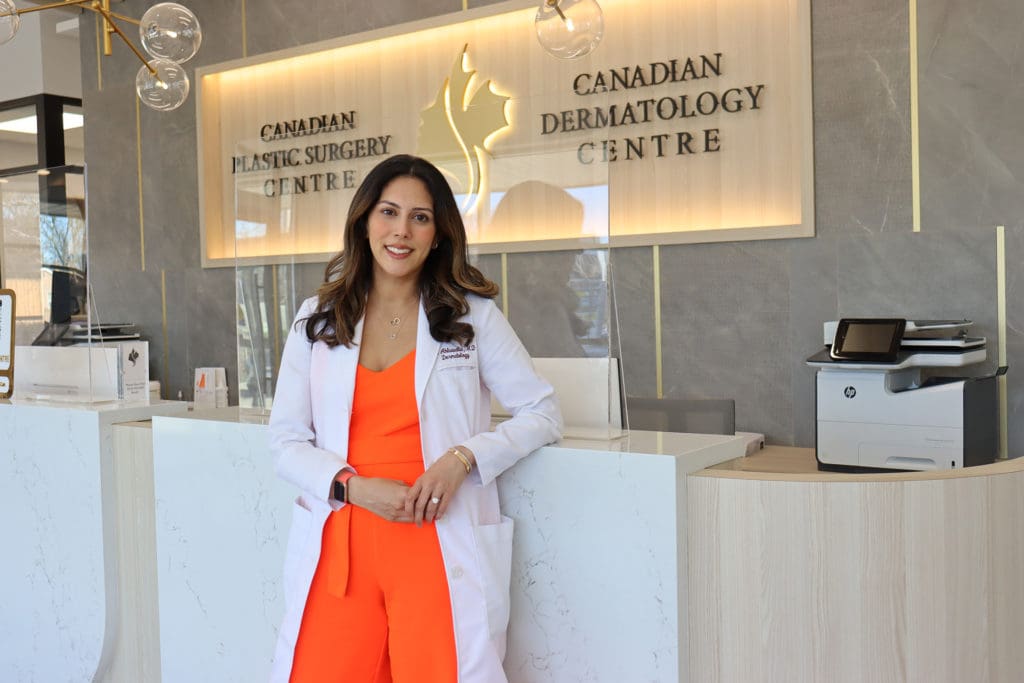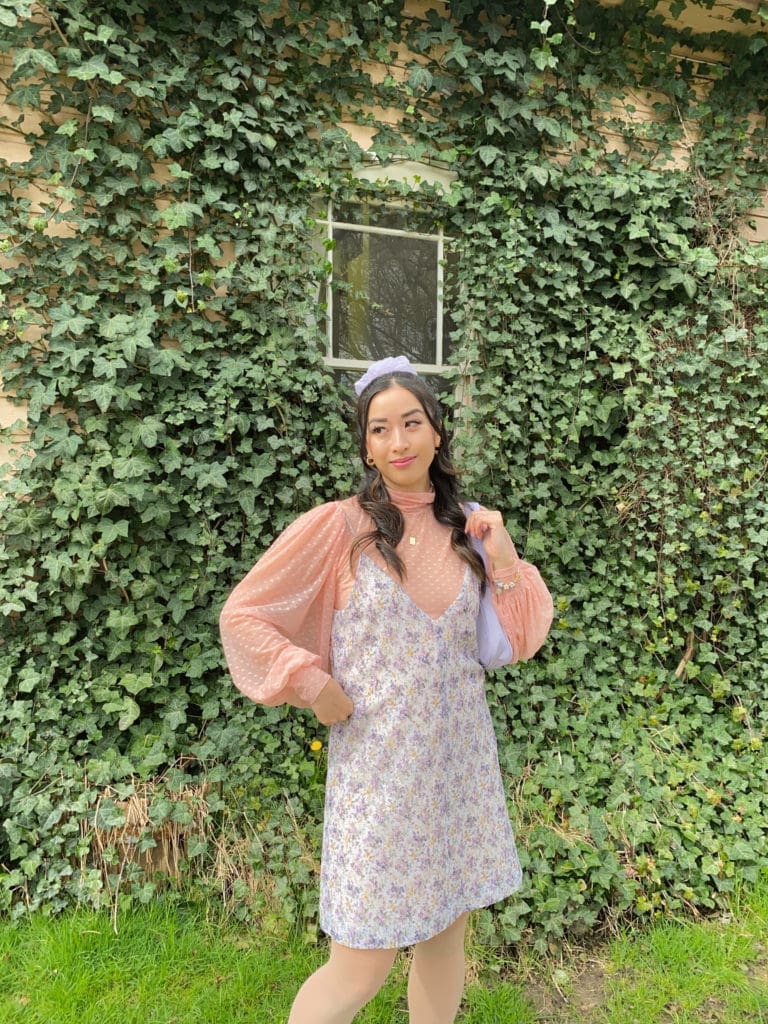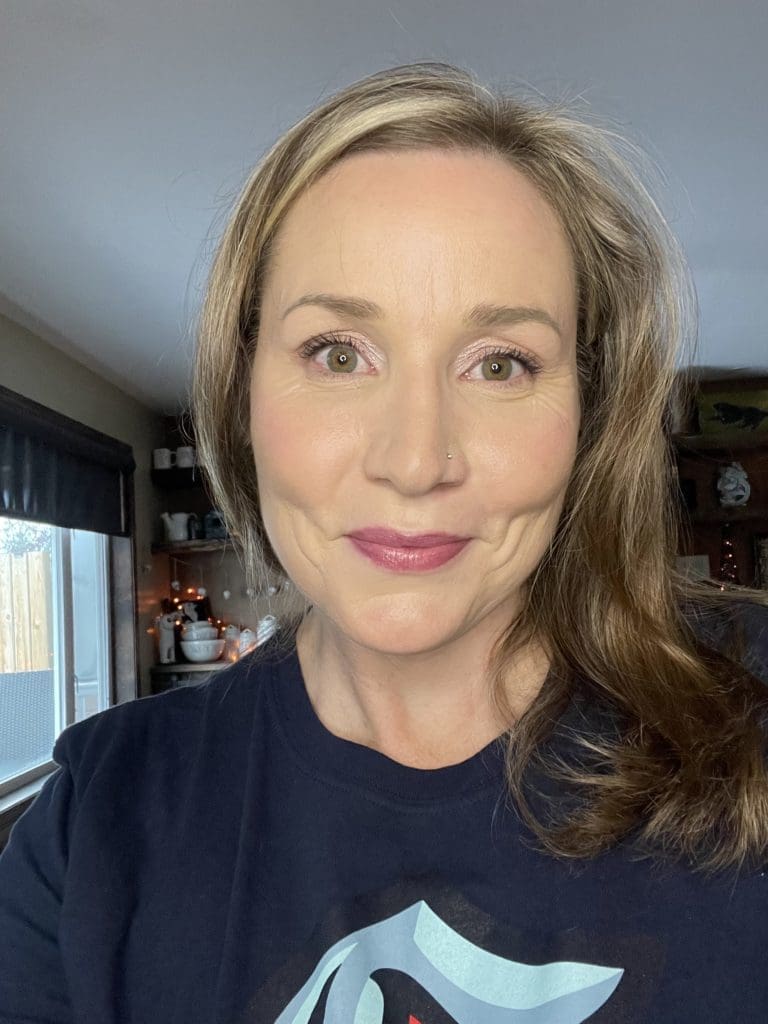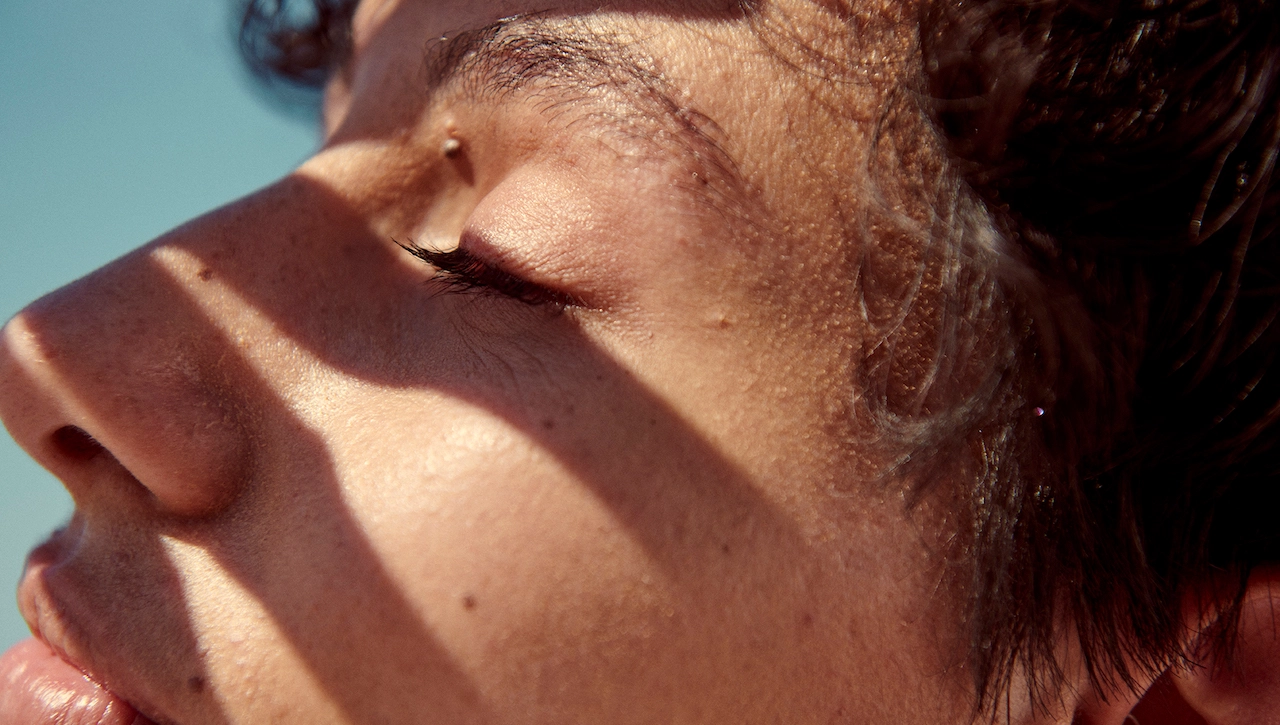Did you know that 21 per cent of early-stage Melanoma went undiagnosed globally because one-third of professional skin-check appointments were missed during COVID-19 lockdowns? And, in Canada, 1,999 melanomas were undiagnosed since the start of the pandemic. Among Canadians aged 15-49, Melanoma is one of the most common types of cancer, and most cases are caused by excessive sun exposure. It can affect anyone regardless of age, race, or sex. Yet, despite the importance of sun safety, many people are still unaware of the need for daily sunscreen use. To raise awareness of the importance of sun protection and dangers of Melanoma, Neutrogena partnered with Melanoma Canada to launch Melanoma Mondays in support of Skin Cancer Awareness Month this May. The bi-weekly social media activation will spotlight real Canadians who have been impacted by Melanoma (the most serious form of skin cancer) and will feature their personal stories about their experiences to help educate Canadians about the importance of sun safety and early detection. Additionally, to allow Canadians to easily check for signs of skin cancer, Neutrogena has also developed the Skin Self Exam tool, which educates consumers on how to conduct a full body skin check from the comfort of their own home. We chatted with three Neutrogena insiders to learn more. —Noa Nichol
Dr. Renita Ahluwalia

Please tell us a bit about yourself to start.
I am a Canadian and American board-certified dermatologist with interests in cosmetic and medical dermatology. In 2019, I opened my own clinic, the Canadian Dermatology Centre; I am also a member of the Canadian Dermatology Association’s sun awareness committee. Outside of work, I love to spend time with my husband and two young daughters, Gia and Taia.
Your work with Neutrogena has made you a great ambassador for proper sun safety. What sorts of things have you learned about sun safety, and what are your top tips and tricks?
Melanoma, the most dangerous type of skin cancer, is one of the most common types of cancer found in younger adults. According to the World Health Organization (WHO), 85% of melanomas amongst Canadian men and women aged 30+ are attributed to UV radiation exposure. It is very important to practice sun safe behaviours. Artificial tanning does not protect your skin or provide a base tan. In fact, artificial tanning devices emit 15X the amount of UV rays as from sun exposure. One indoor tanning session can increase your risk of skin cancer. Some general advice: try to avoid peak hours of the sun (11 a.m. to 3 p.m.), wear hats, SPF-protective clothing, sunglasses, wear a broad-spectrum sunscreen (protects against UVA and UVB) with at least an SPF 30 and reapply every two hours or after sweating or swimming. I also want to bust the myth that wearing sunscreen is greasy, unpleasant, leads to breakouts, creates white casts on the skin, etc. These days, there are a lot of great formulas out there that are aesthetically pleasing and will fit well with your daily routine. Skin cancer is the most preventable type of cancer and it has the highest cure rates when caught early. It is very important to be sun safe.
Does sun safety differ from winter to summer?
The sun is stronger in the summer (UVB rays are stronger) and we spend more time outdoors so reapplication and extra vigilance is needed. That being said, it is important to be sun safe all year round. UV rays can get through clouds, fog, haze, water, sand, concrete and windows. The amount of UVA radiation during daylight hours stays constant throughout the year. They are just as harmful and strong in the winter. The longer wavelengths of UVA are more associated with skin aging (wrinkles, discolouration) while UVB is more associated with skin burning, and leading to skin cancer. A good resource for sun safety all year is Melanoma Canada and Dermatology.ca.
What are three things you wish people knew/understood about the importance of sun safety?
Skin Cancer is the most preventable type of cancer—safe sun practices are key. If caught early skin cancer is highly treatable; if you notice any changes in your skin don’t wait, seek medical advice and examine your skin often. Understand the ABCDES of skin cancer. This helpful acronym stands for: asymmetry, border, colour, diameter and evolving. Third, sun safety is for everybody regardless of age, skin type or ethnicity; anyone can get melanoma and we all want healthy skin.
How can something like the Neutrogena Skin Self Examination Tool help Canadians and their family stay protected?
This tool is a great resource; it shows you how to perform a skin exam, clearly illustrates the ABCDES of melanoma and has some really excellent tips. Keep a record of your spots, take photos of anything unusual, do a self-exam before or after showering or when changing clothes.
Debbie Poh

Please tell us a bit about yourself to start.
I’m a Vancouver-based conscious fashion and sustainable lifestyle blogger. At the start of 2021, I quit my corporate finance job in pursuit of a meaningful, creative career—which ended up being digital content creation. Over the past year and a bit, I’ve greatly enjoyed my journey of self-employment and have been privileged enough to work with many wonderful brands, which align with my core values.
Your work with Neutrogena has made you a great ambassador for proper sun safety. What sorts of things have you learned about sun safety, and what are your top tips and tricks?
As a result of my work as a Neutrogena ambassador, I’ve learned a great deal about the importance of proper sun protection in all seasons and weather conditions. In particular, Melanoma, a very serious and potentially deadly form of skin cancer, can be prevented if SPF is worn regularly and reapplied when necessary. On a daily basis, I always apply sunscreen of 50 SPF to my face and body as part of my regular skincare routine. As someone who loves the great outdoors (especially running and hiking), I make sure to re-apply sunscreen as needed every two hours.
Does sun safety differ from winter to summer?
While most people believe that wearing SPF is unnecessary during the winter or gloomy days, this is decidedly not the case! UV rays can get through clouds, fog, haze, water, sand, concrete and especially snow can reflect—and even increase—the sun’s burning rays. For those who enjoy winter sports, it’s important to remember that fresh white snow reflects up to 88% of the sun’s UV rays, almost doubling a person’s UV exposure. As well, UV rays are stronger at higher altitudes (e.g., when mountain skiing or snowboarding). For the summertime, younger individuals should realize that a single blistering sunburn before the age of 20 increases the risk of developing melanoma later in life. Also, for those who want to be tanned for the warmer months, the leading cause of melanoma is overexposure to ultraviolet (UV) radiation from the sun or artificial sources (tanning beds, sunlamps). Therefore, whether it’s winter or summer, being aware of UV ray and sun exposure is incredibly important. I recommend either limiting your time in the sun or applying (and reapplying) SPF as often as needed!
What are three things you wish people knew/understood about the importance of sun safety?
A tan is not worth risking exposing your skin to Melanoma and premature aging! Early exposure to tanning beds can increase a person’s chance of developing melanoma by up to 75%. Even when it’s not sunny, you should still be wearing SPF. As well, if you’re working indoors near a window, you should be wearing sunscreen. As mentioned earlier, UV rays can get through clouds, fog and haze. Melanoma and non-melanoma skin cancers can affect ANYONE, no matter their ethnicity or skin colour. Therefore, even darker-skinned individuals need to wear SPF to protect themselves.
How can something like the Neutrogena Skin Self Examination Tool help Canadians and their family stay protected?
By using a tool like this all Canadians are given step-by-step instructions on how to examine themselves for Melanoma and non-melanoma skin cancers. When armed with the knowledge provided, it only takes a few minutes to complete a full body check and potentially catch skin cancers in their early stages. When detected early, survival rates can be almost 100%!
Janet Dagenais

Please tell us a bit about yourself to start.
I am a 48-year-old mom of four kiddos ages 18, 15, 7 and 5. I love being a mom, it is by far the hardest job I have ever had, however the most rewarding! My husband and my children are my best friends, they have helped me through so much of this journey, it really is a family disease. I worked as a geophysicist prior to my cancer diagnosis but have not returned since. Raising two little boys, one with autism, keeps me on my toes. I hope to help anyone who needs support with their cancer diagnosis, it takes a strong tribe to get through something like this and I am so grateful to have that.
When and how were you first diagnosed with melanoma?
In January of 2019 I found a lump the size of a large egg in my left groin area. After ultrasound and biopsy, on March 27, 2019, I was diagnosed with Melanoma. Post-surgery on May 2, it was confirmed Stage 3C.
What did receiving that diagnosis feel like?
The initial diagnosis of Melanoma didn’t bother me much when I first heard it. I was extremely uneducated about this cancer. The more I researched what Melanoma was, I realized that it wasn’t “just skin cancer,” like I had originally thought, it was much more, if there was no treatment available to me, it was a death sentence. The realization of this turned my life upside down. I cried a lot, I didn’t sleep much and I thought everyday was the day I would die. It felt devastating, I had so many questions with very few answers.
What were the steps toward recovery?
There were many steps toward recovery. The mental end of it needed to be addressed asap. While physically recovering from the surgeries, my mind went into dark places and I didn’t want to continue in my life, which was heartbreaking because there was no reason that my children should have to live without their mom. When I worked through changing the thoughts of ending my life, things got better as time went on. I started treatment and all of the side effects from that were a new set of challenges. I still have many side effects such as sensitive skin, hair loss and thinning, thyroid issues and very sensitive mouth—I can only use children’s tooth paste to brush my teeth, adult toothpaste burns my mouth. Mental and physical healing continue daily. I need to keep a positive attitude to live the best life I can, nothing is guaranteed. Lymphedema from all of my lymph nodes being removed has been challenging, everything I eat and how active I am controls my lymphedema on a daily basis.
Are you cancer free today?
Unfortunately, Melanoma patients will never be considered cancer free or in remission, they have their own special term, NED (No Evidence of Disease), which means that when they had their last scan, there was no evidence of the cancer in their body. Melanoma cells can lie dormant in your body then wake up and become active at some point down the road. Clearly a bigger risk for patients like myself where their cancer has spread to the lymph nodes.
When it comes to melanoma, how does sun safety play a role in prevention?
Although there was no source found on myself to explain where my melanoma came from or how it started, the majority of Melanoma cases are proven to be from the sun or UV exposure. Sun safety is absolutely necessary from a young age. A single blistering sunburn before the age of 20 increases the risk of developing melanoma later in life. Protect your children because they don’t understand the devastating impacts that the sun can have.
As a melanoma survivor and makeup artist, what are your top sun safety tips?
My top sun safety tips are using sunscreen daily, no matter what time of the year it is, wearing hats, sunglasses, SPF clothing and planning events outside of the peak UV exposure of the day. All can protect you from the sun. Being a makeup artist has taught me that I can get the nice “tanned look” from mixing my bronzer with my sunscreen, then applying to my face/body. I share this tip with all my clients. Also, just because your make up says it has SPF in it, I almost guarantee it is not as much as you need to be protected, you can always add more, especially to your face because it is exposed to the UV rays all day long. Apply the sunscreen to your face prior to applying your make up. My favourite product to use on my face is Neutrogena Clear Face with SPF 50.
What are three things you wish people knew/understood about melanoma and/or the importance of sun safety?
People need to understand that you can get a sunburn even on a cloudy day, it is important to were sunscreen daily. Melanoma is not “just skin cancer,” it is a death sentence if you don’t catch it early. Book an appointment with your dermatologist today, start a baseline for your mole health with a professional and learn the ABCDES of Melanoma. You will be the biggest advocate in your life and your chance of avoiding Melanoma. This can be prevented. We need to educate more, not just in May, Melanoma awareness month. Melanoma has destroyed so many lives and yet I find that very few people actually know how serious it is. I didn’t, before I was diagnosed.

Be the first to comment